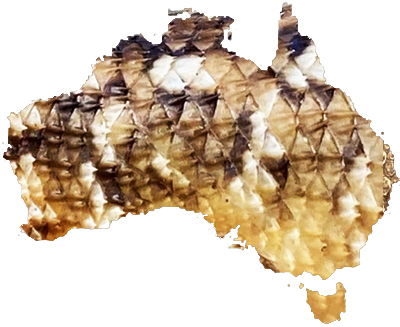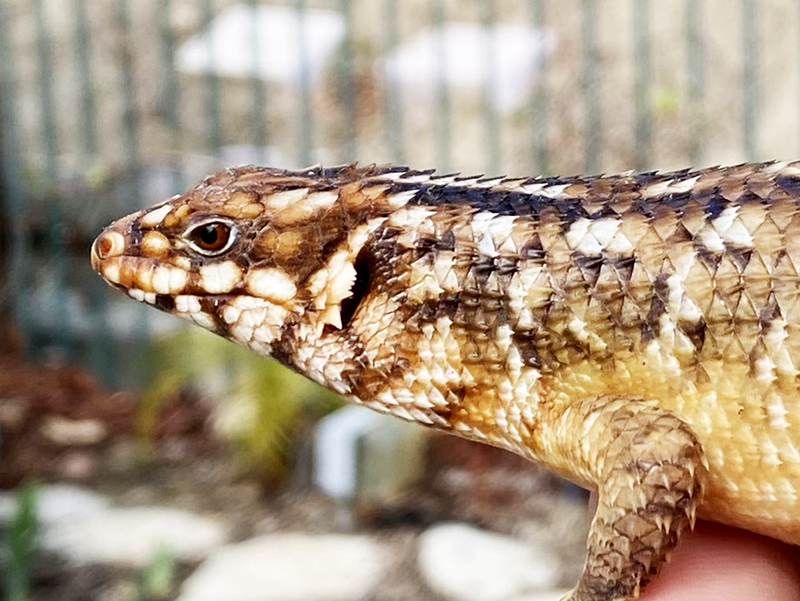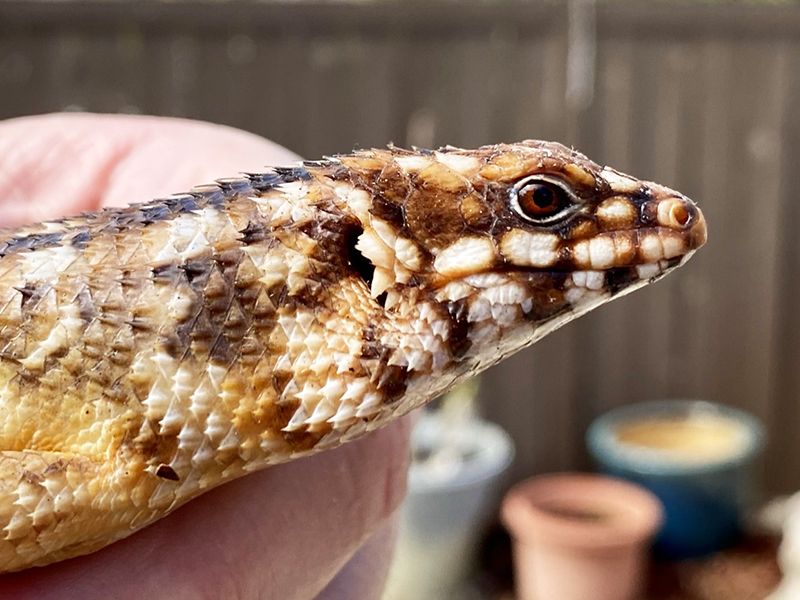







 |
||||||
 |
 |
 |
 |
 |
 |
 |

| About: The
Hosmer's spiny-tailed skink (Egernia
hosmeri) was described by
Kinghorn in 1955 and is endemic to
Australia. They are a quite colorful
skink, clad in shades of black,
brown, red, yellow and white, which
helps them blend in nicely with the
rocky terrain in which they are
found. They have an overall spiky
appearance and are one of the larger
members of the genus, with adults
reaching around 9.5 inches (240 mm)
in total length. Range: These spiky skinks make the rock outcrops of Queensland and parts of the Northern Territory their home as seen in the range map. Two disjunct populations exist, which are separated by the Carpentarian barrier that runs south of the Gulf of Carpentaria, and it is unknown if gene flow occurs between the populations. Habitat: These skinks are saxicolous in nature and spend the majority of their time in the crevices of large rocky outcrops. They may occasionally use hollow logs and other semi-arboreal habitats for shelter as well. They rarely venture far from a secure crack or crevice, rapidly retreating to these refugia at the slightest sign of danger. They are a scat piling species, which would give an indication as to their presence in a given area. Natural History Notes: Their spiky skin helps them remain tightly wedged within rock cracks, which makes it difficult for predators to remove these robust skinks from their refugia. Unlike their smaller cousins the pygmy spiny-tailed skink (Egernia depressa), there is a fracture plane in the tail, allowing for tail autonomy as another form of predator avoidance. The spiky tail may also be a further deterrent for would-be predators. Like other members of this genus, E. hosmeri give birth to live young in mid-late summer. Litter size is generally between 1-4 babies, which is a bit disproportionate for this robust skink. The young are quite large and are around 3.6 inches (93 mm) total length. Double litters within a year have been reported. They mature at around 3-5 years of age and can live over 20 years. They are also social lizards, forming family groups of 2-9 animals that may include juveniles. General Notes: These skinks are less common in collections. They are fairly bold as compared with other members of the genus, but they do not appear to enjoy handling. We are happy to be working with a pair from the Ferger/Repashy line. They are very entertaining to keep and we are enjoying them thoroughly. |
 
Female Hosmer's
spiny-tailed skink (Egernia hosmeri)

Male Hosmer's
spiny-tailed skink (Egernia hosmeri)
|